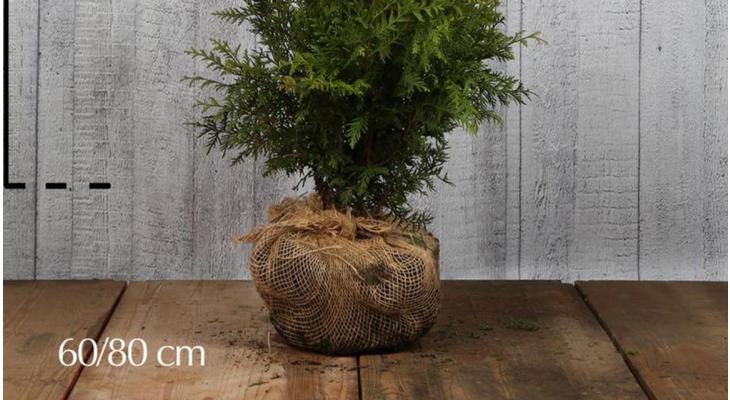So today, we’ll take a closer look at the advantages and disadvantages of hedge plants with a root ball.
Contents
Easy to plant
Hedge plants with a root ball are relatively practical and easy to plant, which is, of course, the very first, major advantage compared to plants that come in a pot or other container. This is because with potted plants, the pot must first be removed before they can be planted. However, you can plant the jute cloth in which the root balls are wrapped into the ground immediately along with the root ball because jute is biodegradable.
This makes planting your new hedge immediately much faster, especially if you want to plant a particularly long, full-bush hedge in the garden. However, be aware that sometimes the root ball is also held together with a piece of iron wire, but this should be removed before planting to allow the roots of the hedge plants to spread more easily.
Hardly any damage
When it comes to potential damage to the roots, hedge plants with a root ball are much better protected from root damage than root stock. In addition, root goods can dry out much faster and the delicate roots can burn quickly in sunlight, which can even cause the plant to die. However, the soil that is in a root ball can protect the roots of a hedge plant much better, making the chance of failure significantly less than with root stock.
Therefore, we recommend that you always buy an extra 10% for root stock. However, this is not necessary for hedge plants with a root ball. Just in case, 1-2 replacement plants with a root ball are quite sufficient. Of course, this saves time when planting your new hedge because you don’t have to dig up the plants later to replace them with healthy plants. However, with root stock, failure can occur more quickly, so an extra 10% when buying root stock is a realistic estimate.
Relatively inexpensive
Prices of hedge plants with a root ball can vary from plant variety to plant variety. Of course, the height of growth and the quality of the plant still play a role. Nevertheless, hedge plants with a root ball are usually cheaper than hedge plants that are supplied as potted plants. Ready-made hedge elements are then a little more expensive, because they are full-grown specimens. However, hedge plants with a root ball are not as inexpensive as root stock because root stock is and always will be the least expensive option.
Our popular copper beeches are a good example of this. The 150-175 cm tall copper beech (extra quality) is currently available as a potted plant or also as a hedge plant with a root ball. The price difference is two to three euros. Of course, this is not a particularly large price difference, but when creating a long hedge, this price difference can still be quite noticeable. Hedge plants with a root ball are therefore always cheaper than potted plants, which can save you money.
Large hedge plants are much heavier
The weight of a hedge plant with a root ball does not matter very much. Nevertheless, you should think carefully about which hedge plant you choose, especially when it comes to really heavy specimens. Nevertheless, even hedge plants with a root ball can be quite heavy if they are plants that have already reached a high growth height or are already fully grown. Therefore, if the weight of the plants is not insignificant for you, then you should choose more lightweight plants that are much more manageable.
Planting a hedge of already mature conifers can therefore be very stressful for your back. Therefore, full-grown thuja or yew should not be carried and planted by one person. However, this problem can be quickly solved by getting help from friends or from family members when planting your tall hedge. Of course, another solution can be to choose hedge plants with a root ball, which are still a little smaller, younger and therefore lighter.


